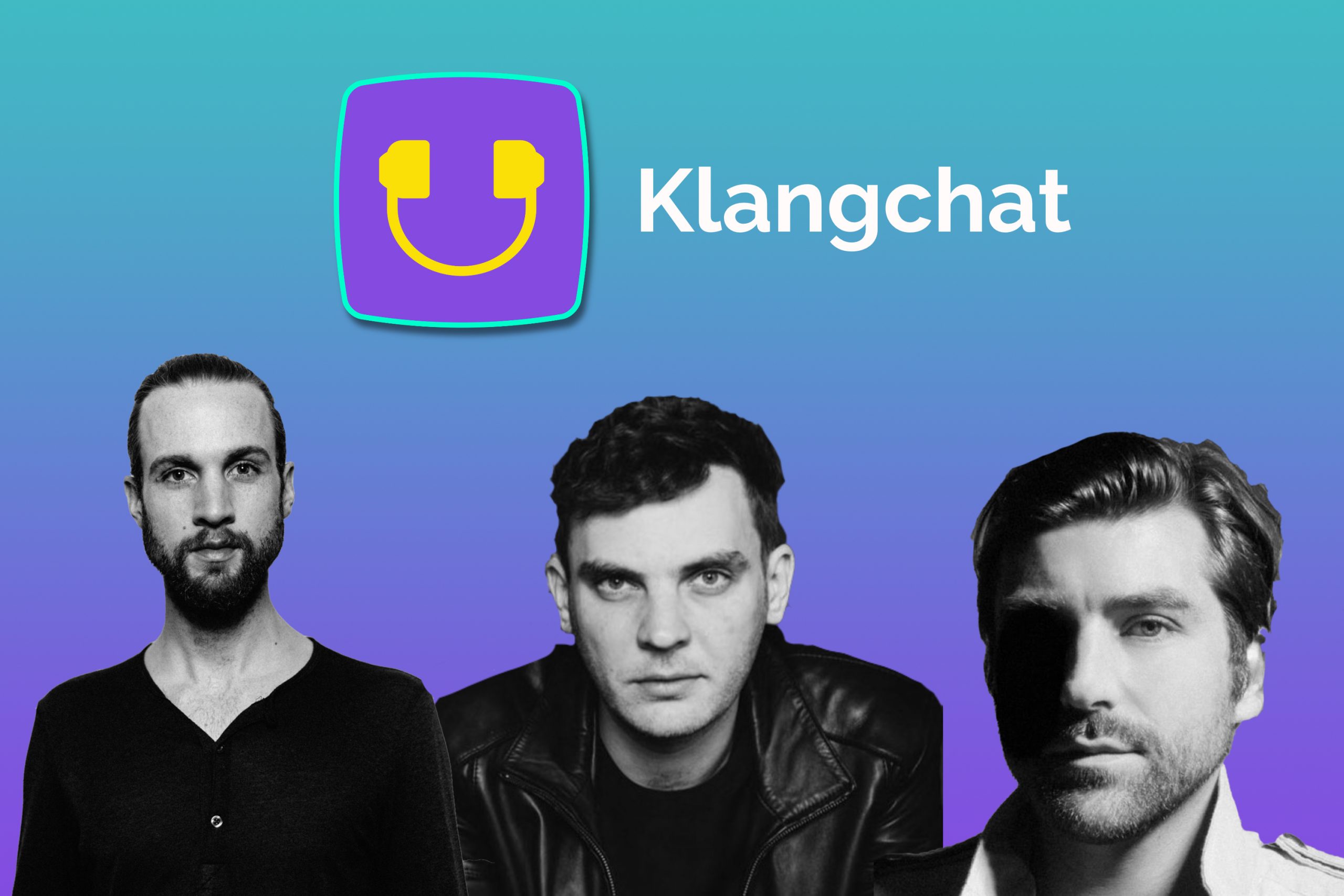Text messages and emojis are yesterday’s news. The new communication is focussing on audio. The younger generation, in particular, prefers to send voice messages on the messenger services. This may have the advantage of the messages being quickly spoken and sounding more personal - but they can’t be given an original sound or decorated with graphics. Spoken - sent - listened to. The MediaTech Hub startup Klangchat is changing all that and offering a social audio app which allows users to add music and interactive stickers to their messages.
The Klangchat team can be found at the MediaTech Hub Space and in the MediaTech Hub Accelerator programme. They recently participated in a Design Thinking Workshop organised by the Hasso Plattner Institute. The panel on 11 November, 2021 during the MediaTech Hub Conference will see them talking about how they found new approaches for their product within the aforementioned framework. “Voice messages are a secondary medium in other services. We have specialised as a messenger service on audio and this form of communication,” says co-founder Philip Kressin who is responsible for partnerships and content at Klangchat.
The first version for iOS is already available in the Apple Store and, apart from lots of music, has free animated stickers and some as In-App Purchases. The short audio-video snippets can be shared on all of the current messenger services such as WhatsApp, Telegram, iMessages or Facebook Messenger and are also suitable for branded content marketing. In a next step, Klangchat would like to add an in-house messenger service to the app. What will be special about this is that the messenger works exclusively on an audio level, there won’t be any “texting back”. Even the entire user experience is designed for the user’s voice.
Optimised audio experience thanks to Klangchat sound engine
The app promises another advantage apart from the musical and visual background: those who have inhibitions about hearing their own voice and thus rarely use audio messages are supplied with small automated adjustments by means of the Klangchat sound engine. The spoken word is subtly adapted to the rhythm of the music. You can also use your own photos and turn them into simple animated sequences with lip-sync simulating the spoken words. Whether it’s holiday greetings with tropical sounds, an enthusiastic message about a new job with orchestral music, or a simple “How are you?” accompanied by an animated photo: the users have fun doing it, they can make their messages more entertaining and embellish them with audio and images.
The music comes from the Klangchat founders themselves since their backgrounds are in the music industry, DJing, mixing and composition. Founder Henning Grambow has composed film scores and was involved in setting up a music publishing company. Philip Kressin toured Argentina as an indie rock star and had already an exit there with a digital cultural zine with an integrated social network. Julian Laping has worked as a sound and product designer, composer and music producer, and Piotr Śnieżek is a designer and developer of web and mobile apps.
Branded Content and Gamification for Gen Z
They are now using their joint expertise for the successful realisation of Klangchat’s business model in cooperation with Gen Z and branded content partners. The target group is clearly focused on 20somethings, a generation that “culturally embraces voice messaging”. They communicate more in private chats than in public networks and are harder to reach for marketing purposes. How do you relay branded content to them? Klangchat offers personalised stickers - similar to the Sponsored Lenses on Snapchat - or music branded specifically for certain companies. “Brands and companies need to offer creative and fun snippets of content for them to appear in teens’ direct message threads in the first place,” says Philip Kressin.
Test runs in the Indian market have shown that many users are also willing to pay for subscription models or In-App Purchases. One test run saw the company working with the producers of the Indian blockbuster Bahubali. During the film’s promotional campaign, fans were able to send voice messages with avatars of the film’s characters and add music inspired by the soundtrack. An opportunity that many people seized upon and also purchased In-App characters. Such gamification elements are also in high demand in the field of messenger services. “They were enthusiastic about the functions in India, that really motivated us ‚” says co-founder Henning Grambow. Generally speaking, the Asian market is very open to audio. Communication in messenger services there usually consists of audio messages. This is because the large number of characters in the Chinese or Indian written languages makes texting more laborious.
Less hate speech thanks to voice messages
Voice messages have another advantage apart from the emotional level and the fun factor: hate speech and cyberbullying often appear in text form in social media. “Hate speech is very often written speech, so to speak” says Grambow. “It’s one thing if you write something and another if you have to say it.” So, there is a high motivation to create a safe space and consequently use audio to leave less scope for digital violence.
The team is continously testing the app developments on the target group. Next year will see the focus on iteration.
Get your ticket now for the MediaTech Hub Conference and don’t miss the session with Klangchat, among others:
- 11 November, 2021, Partner Stage
12:00 - 12:45, Partner Session “Design Thinking Meets Start-ups: A Case Study of the MTH Design Thinking Challenge” with Henning Grambow, Jörg Jonas-Kops, Philip Kressin, Samuel Tschepe
About MTH Blog
The media technologies of the future are already being used today – not only in the entertainment sector, but also in a wide variety of industries. Christine Lentz meets up with tech enthusiasts, established companies and researchers for our monthly MediaTech Hub Potsdam blog to tell the stories behind the innovative business models.
About MTH Blog
The media technologies of the future are already being used today – not only in the entertainment sector, but also in a wide variety of industries. Christine Lentz meets up with tech enthusiasts, established companies and researchers for our monthly MediaTech Hub Potsdam blog to tell the stories behind the innovative business models.



